Tech Innovations
US: Trump Warns Microsoft, Google, Other Tech Giants to “Stop Hiring In India”

In a bold new statement that’s making global headlines, former U.S. President Donald Trump has issued a warning to top tech companies including Microsoft, Google, and Meta urging them to “stop hiring in India” and prioritize American workers. The remarks come as part of his renewed push for economic nationalism in his 2024 campaign trail, aiming to win back support from tech workers and the domestic job market.
What Did Trump Say?
During a recent campaign rally, Trump criticized big tech firms for “offshoring high-paying tech jobs to India” while laying off thousands in the U.S. He directly called out:
- Microsoft for expanding cloud and AI centers in Hyderabad
- Google for its growing engineering hubs in Bangalore and Pune
- Meta and Amazon for continued outsourcing of software development and customer service roles
Trump warned that if re-elected, he would introduce penalties and incentives to discourage overseas hiring and reward U.S.-based recruitment.
“These companies are getting rich while abandoning the American worker. It has to stop.” Donald J. Trump
Why This Matters
Tech giants have long relied on India’s vast talent pool and cost-effective workforce. However, Trump’s comments may signal a policy shift that could impact:
- H-1B visa regulations
- Global IT outsourcing trends
- India–US tech relations
- Domestic hiring incentives
Apple’s eligibility list
AppleCare+ and AppleCare One – Eligible Devices (2025)
According to Apple, both AppleCare+ (for single-device coverage) and AppleCare One (multi-device subscription) support the following product lines:
- iPhone
- iPad
- Mac (MacBook, iMac, Mac mini, Mac Studio, Mac Pro)
- Apple Watch
- Apple Vision Pro headset
- Apple Display
- Apple TV
- HomePod
- Headphones (AirPods, Beats)
AppleCare One Updated Eligibility Rules
AppleCare One introduces two major changes for eligibility:
- Devices up to 4 years old (in good working condition and passing diagnostic tests) are now eligible
- Headphones must be within 1 year old for eligibility
- All devices must be associated with the same Apple ID (no family-sharing support currently)
Note: Traditional AppleCare+ must be purchased within 60 days of device purchase (30 days in some regions like Japan) Apple Support Community+1Lifewire+1
AppleCare One Eligibility Table
| Category | AppleCare One Eligibility |
|---|---|
| iPhone, iPad, Mac, Watch | Devices ≤ 4 years old, associated with same Apple ID, pass diagnostics |
| Apple Vision Pro, Apple TV, HomePod, Display | New or recently purchased devices (within standard window) |
| Headphones (AirPods, Beats) | Under 1 year old, and associated with your Apple ID |
How to Add or Remove a Device from AppleCare+ with Apple One (2025 Guide)
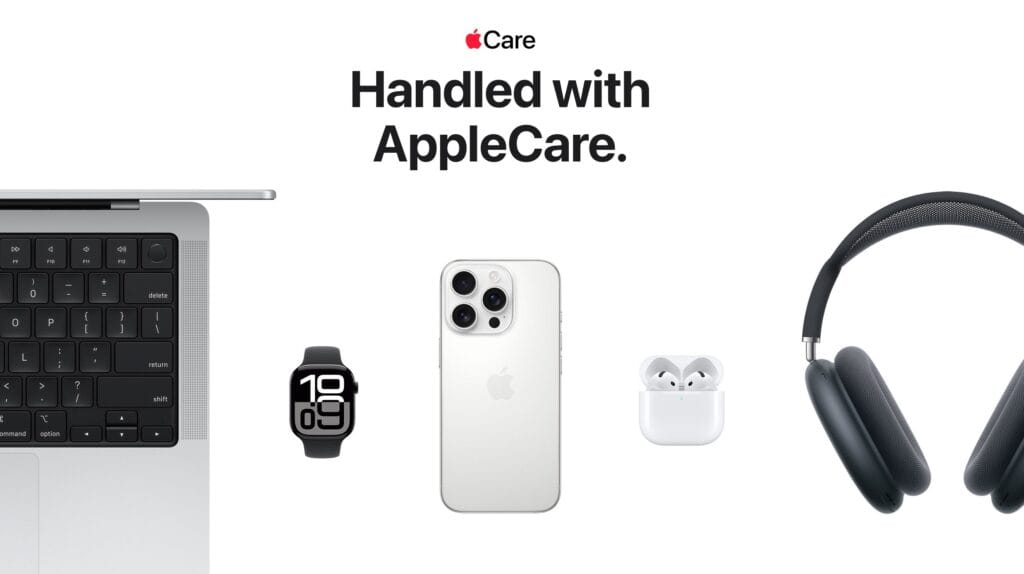
AppleCare+ offers premium support and protection for Apple devices, and now with Apple One Premier, you can manage multiple devices under one plan. Whether you want to add a new iPhone or remove an old MacBook, this guide will walk you through the steps.
What Is AppleCare+ with Apple One?
AppleCare+ with Apple One is a premium subscription that bundles AppleCare+ coverage for eligible devices under your Apple One Premier plan. You get device protection, extended warranty, and 24/7 tech support all in one subscription.
SEO Keywords:
- AppleCare+ device management
- Add device to AppleCare One
- Remove Apple device from AppleCare plan
- Apple One Premier device coverage
How to Add a Device to AppleCare+ with Apple One
To add a new iPhone, iPad, Mac, or other eligible device:
Step-by-Step Instructions:
- Sign In to Your Apple ID
Go to appleid.apple.com and log in using the Apple ID linked to your Apple One Premier subscription. - Go to AppleCare+ Settings
Open the Settings app on your Apple device > Tap [Your Name] > Subscriptions > Select Apple One Premier. - Select “Manage Devices”
Under your AppleCare+ section, tap Manage Devices. - Add New Device
Tap Add Device, then follow the prompts to register the new device. It must:- Be signed into your Apple ID
- Be eligible for AppleCare+ (check Apple’s eligibility list)
- Confirm Coverage
After adding, your device will appear under your AppleCare+ list. Coverage activates immediately or upon confirmation.
How to Remove a Device from AppleCare+ with Apple One
If you’ve sold a device or replaced it, follow these steps to remove it:
🔹 Step-by-Step Instructions:
- Open Settings or Visit iCloud.com
On your iPhone or iPad, go to Settings > [Your Name] > Subscriptions > Apple One Premier. - Tap “Manage Devices”
This displays all devices currently covered under your AppleCare+ plan. - Select the Device to Remove
Tap on the device you want to remove and choose “Remove from Plan” or “Stop Coverage”. - Confirm Removal
You may need to confirm removal with your Apple ID password or Face ID.
📝 Note: Removing a device ends AppleCare+ protection for that device. You cannot re-add it once removed unless within 60 days of original purchase.
Things to Keep in Mind
- Device Limits: Apple One Premier allows up to 10 devices to be covered.
- Apple ID Must Match: Devices must be linked to the same Apple ID used for the Apple One subscription.
- New Device? Make sure it’s eligible and still within the AppleCare+ enrollment window (usually 60 days after purchase).
Why It Matters
By managing devices properly under your AppleCare+ with Apple One plan, you:
- Save on separate insurance plans
- Keep all devices protected under one bill
- Easily track and manage your tech assets
SEO Best Practices Applied
- Target Keywords: “Add device to AppleCare+”, “Remove Apple device from plan”, “Apple One Premier device coverage”
- Meta Description Suggestion:
Learn how to add or remove devices from AppleCare+ with Apple One Premier. Step-by-step guide for managing AppleCare coverage in 2025. - Internal Links Suggestion:
- Link to a guide on [How to Check AppleCare Coverage]
- Link to [How to Cancel Apple One Subscription]
AI-Powered Smart Glasses

Ray‑Ban Meta Smart Glasses (Gen 2)
- Processor: Qualcomm Snapdragon AR1 Gen1
- Cameras: Dual 5 MP → Photos up to 2592×1944, 1080p video @30 fps.
- Audio/Mic: Open‑ear speakers, 5‑mic array with noise suppression.
- AI Assistant: Voice‑activated Meta AI (“Hey Meta”), real‑time translation & object recognition.
- Battery Life: ~4 hrs active use; charging case extends to ~36 hrs.
- Weight & Style: Lightweight (~< 50 g), numerous frame options; price ~US$299.
Oakley Meta HSTN
- Camera: 3K resolution (~3024×4032), improved over Ray‑Ban Gen 2.
- Battery Life: Up to ~8 hrs; livestreaming up to 48 mins, audio up to ~4 hrs.
- Connectivity: Bluetooth 5.3, same Meta AI features and live streaming support.
- Form Factor: Sporty Oakley design with prizm polarized lens; premium price ~$499.
Xiaomi AI Glasses (2025)
- Processor: Qualcomm Snapdragon AR1 Gen1
- Weight: ~40 g (excluding lenses), with IP54 splash/dust resistance.
- Camera: 12 MP Sony IMX681; supports 2K video @ 30 fps with EIS.
- Memory: 4 GB RAM, 32 GB onboard storage
- Battery Life: ~8.6 hrs typical use; ~7 hrs music playback; ~45 mins video recording.
- Audio/Input: Dual open‑ear stereo speakers; five‑mic array including bone‑conduction mic; tap/swipe and voice controls via XiaoAI assistant.
Brilliant Labs Frame AI Glasses
- Weight: ~39–40 g among the lightest on market
- Display: 640×400 micro‑OLED via prism offers ~20° FOV.
- Camera & Sensors: 1280×720 camera, mic, accelerometer, compass; Bluetooth 5.3.
- Battery: 222 mAh internal + “Mister Power” dock (~149 mAh), supporting ~6 hrs continuous or up to ~18 hrs normal use.
- AI Assistant: Noa multimodal AI front‑end integrating GPT‑4, Whisper, Perplexity, Stable Diffusion; open‑source design.
- Price: ~$349 (pre‑order price); ~$448 with prescription lenses.
Summary Table
| Model | Weight | Processor | Camera & Video | Battery Life | AI Features | Special |
|---|---|---|---|---|---|---|
| Ray‑Ban Meta (Gen 2) | < 50 g | Snapdragon AR1 Gen1 | Dual 5 MP (1080p video) | ~4 hrs + case | Meta AI, translation, object ID | Affordable, stylish |
| Oakley Meta HSTN | ~>50 g | Snapdragon AR1 Gen1 | 3K camera, higher res capture | ~8 hrs | Same as Ray‑Ban + livestream | Enhanced battery & camera |
| Xiaomi AI Glasses 2025 | ~40 g | Snapdragon AR1 Gen1 | 12 MP (2K video) | ~8.6 hrs typical | XiaoAI, translation, payments, object & food recognition | Electrochromic lenses |
| Brilliant Labs Frame | ~39 g | nRF52840 MCU + Noa AI | 720p camera, sensor-rich | ~6–18 hrs (w/ dock) | GPT-4, Whisper, Perplexity, open‑source |
Foldable laptop 2025, Samsung FlexNote
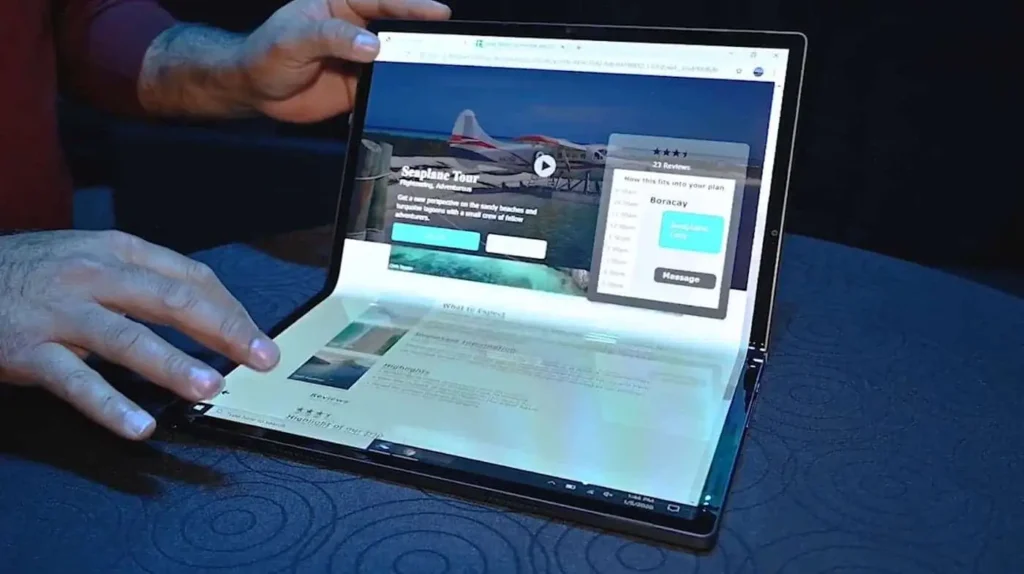
The Samsung FlexNote 2025 represents the next evolution in portable computing combining the power of a full laptop with the flexibility of a foldable display. Featuring a large 17.3-inch foldable OLED screen, this device can transform from a tablet into a traditional clamshell laptop or even a dual-screen setup.
Samsung has refined the FlexNote with improved hinge durability, a lighter magnesium frame, and optimized multitasking powered by the latest Intel Core Ultra or Qualcomm Snapdragon X Elite processors. It supports a magnetic keyboard, stylus input, and multi-window productivity making it ideal for hybrid workers and digital creators.
Whether you’re working, sketching, or streaming, the Samsung FlexNote adapts to your lifestyle with elegance and innovation.
Foldable Laptop Concept (2025) – Key Specs & Features
Although Samsung has not yet released a production version, their FlexNote concept, showcased at CES, offers a glimpse of what’s possible in foldable laptop technology.
- Display: 17-inch foldable Dynamic AMOLED 2X display when fully open, retracting into a 13-inch compact form factor. Dual-use: full screen or folded into virtual keyboard/workstation orientation.
- Protection by Design: When folded, the screen is tucked inward safeguarded from bumps and scratches.
- Form Factor: Transitions between tablet, laptop, and dual-screen setup ideal for portability and productivity
Expected Hardware (Based on Samsung’s Galaxy Book AI PCs)
While official hardware details await announcement, the FlexNote is expected to launch with specs aligning roughly with Samsung’s 2024–25 AI-powered Galaxy Book lineup.
- Processor (speculative): Latest Intel Core Ultra 7 / Ultra 5 (EVO class) or Snapdragon X Elite (Qualcomm).
- Display Resolution: High-resolution AMOLED panels with 500 nits brightness, 120 Hz+ refresh.
- Memory / Storage: Likely 16 GB to 32 GB RAM, 512 GB up to 1 TB NVMe SSD.
- Connectivity: Wi-Fi 6 / 6E, Bluetooth 5.x, Thunderbolt 4 / USB‑C PD, microSD expansion.
- Input & Extras: Support for stylus input (S Pen), multi-window mode, and Pro keyboard/dock accessories.
- Battery: Around 60–70 Wh cells with USB-C fast charging support (65 W+).
- Weight / Dimensions: Similar Galaxy Book weight range (~1.15–1.7 kg depending on size)
Apple Vision Pro 2, AR headset 2025
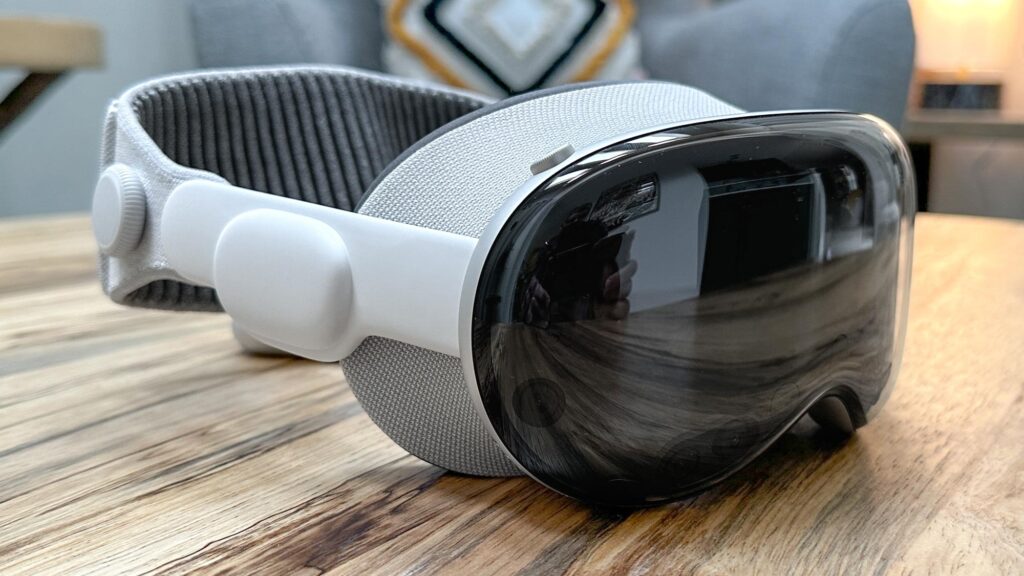
The Apple Vision Pro 2 is Apple’s latest advancement in augmented reality (AR) and spatial computing, expected to launch in late 2025. Building on the foundation of the original Vision Pro, this headset brings a powerful new Apple M4 chip, deeper Apple Intelligence (AI) integration, and a redesigned ergonomic fit for longer, more comfortable use.
Designed to blur the line between the digital and physical world, the Vision Pro 2 features dual micro‑OLED displays with ultra-high resolution, intuitive eye-tracking, and gesture control, allowing users to navigate apps, workspaces, and immersive experiences using just their hands and eyes—no physical controller needed.
Powered by visionOS 2 (upgradable to visionOS 26), it introduces eye-scrolling, real-time AI assistance, and advanced spatial interactions for developers, creatives, and enterprise users. It’s the perfect blend of performance, comfort, and futuristic AR technology in one sleek headset.
Apple Vision Pro 2 – AR Headset 2025 Key Specifications
| Category | Specification |
|---|---|
| Model | Apple Vision Pro 2 (2025) |
| Processor | Apple M4 chip (rumored) with upgraded Neural Engine |
| Display | Dual Micro‑OLED panels, ~23 million pixels combined, ~100Hz refresh rate |
| Operating System | visionOS 2 (upgradable to visionOS 26 with eye-scrolling support) |
| AI Features | Apple Intelligence integration, real-time gesture & eye tracking |
| Input Controls | Eye tracking, hand gestures, voice commands, and optional keyboard/trackpad |
| Sensors | LiDAR, ambient light sensor, 6 external cameras, TrueDepth, motion tracking |
| Audio System | Personalized Spatial Audio, beamforming mic array |
| Battery Life | ~3 hours typical use (improved from 2.5h) |
| Comfort | Redesigned strap for better weight distribution and prolonged wear |
| Biometrics | Optic ID (iris recognition for secure login) |
| Storage Options | Likely 256GB / 512GB / 1TB (based on Vision Pro 1) |
| Connectivity | Wi‑Fi 6, Bluetooth 5.3, USB-C battery connector |
| Weight | ~600–650 g (headset); battery ~353 g |
11 Amazing Tech Gadgets of 2025
The tech world is evolving fast, and 2025 is already brimming with game-changing gadgets designed to make life smarter, faster, and more efficient. Below are 11 of the most exciting tech innovations of the year—perfect for your next upgrade!
1. Apple Vision Pro 2
The next-gen Apple Vision Pro 2 features improved AR/VR capabilities, lighter design, and longer battery life, redefining how we experience mixed reality.
See more details about: Apple Vision Pro 2, AR headset 2025
2. Samsung FlexNote Laptop
Samsung’s foldable FlexNote laptop combines tablet flexibility with full desktop performance, perfect for hybrid workers.
See more details about: Foldable laptop 2025, Samsung FlexNote
3. AI-Powered Smart Glasses
AI glasses from startups like Brilliant Labs allow real-time translation, navigation, and notifications directly on your lenses.
See more details about: AI smart glasses, best smart glasses 2025
4. Google Pixel 10 Pro
The Pixel 10 Pro boasts a custom Tensor G4 chip, next-level AI photography, and all-day battery optimization.
Google Pixel 10, Pixel 10 Pro review
5. Amazon Astro 2 Home Robot
Smarter and more intuitive, Astro 2 can patrol your home, recognize faces, and sync with Alexa routines.
Amazon Astro 2, home robot 2025
6. Xiaomi CyberDog 2
The new CyberDog 2 is faster, more agile, and AI-trained to follow commands, detect objects, and interact playfully.
SEO keyword: Xiaomi CyberDog 2, robot dog 2025
7. Meta Ray-Ban Smart Glasses 2025
With improved camera, livestreaming capabilities, and ChatGPT integration, Meta’s smart glasses blend fashion with function.
SMeta smart glasses, Ray-Ban Meta 2025
8. AI-Powered Home Gym (Tonal 2)
The Tonal 2 uses AI to adjust resistance and suggest workouts in real time, offering a personal trainer in your wall.
best AI home gym 2025, Tonal 2 review
9. Tesla Optimus Gen 2
Tesla’s humanoid robot can walk, carry objects, and is expected to assist in warehouses and homes.
STesla Optimus Gen 2, Tesla robot 2025
10. Nothing Phone (3)
Known for its transparent design and Glyph Interface 2.0, Nothing Phone (3) adds unique AI voice features and a stronger Snapdragon chip.
Nothing Phone 3, best smartphones 2025
11. Smart Rings for Health (Oura Gen 4)
The latest Oura Ring Gen 4 offers advanced biometric tracking, including cortisol levels and mental health metrics.
smart ring 2025, Oura Ring Gen 4 features
2025’s lineup of tech gadgets showcases the future of human-machine interaction. Stay ahead by exploring these cutting-edge tools.
How to Set Up Dual Monitors on Windows and Mac
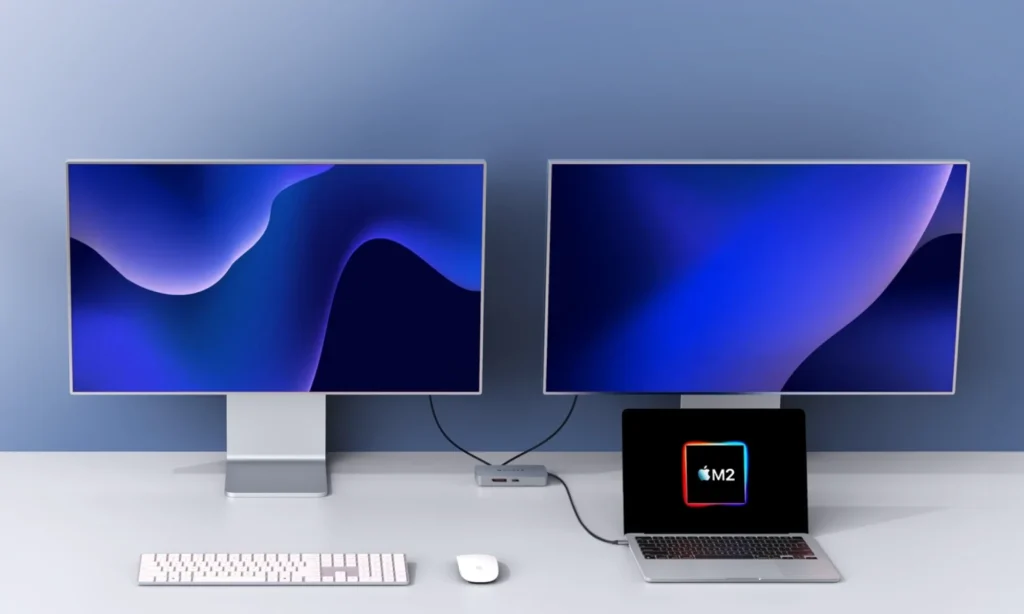
Learn how to set up dual monitors on your Windows PC or Mac. Boost your productivity with this easy step-by-step guide for multiple screen setup.
Adding a second monitor can transform your workspace. Whether you’re working from home, gaming, or multitasking, a dual-monitor setup enhances productivity and creates a more organized desktop experience.
In this guide, we’ll show you how to set up dual monitors on both Windows 10/11 and macOS, covering connection types, display settings, and troubleshooting tips.
Benefits of a Dual Monitor Setup
- Increase productivity with more screen real estate
- Simplify multitasking (email, docs, video calls)
- Better workflow for designers, editors, and coders
- Improved gaming and streaming experience
What You’ll Need
- A compatible computer with at least 2 video outputs (HDMI, DisplayPort, USB-C, VGA)
- Two monitors with matching cables
- Necessary adapters (if connecting HDMI to USB-C, for example)
How to Set Up Dual Monitors on Windows 10/11
Step 1: Connect the Second Monitor
- Plug the second monitor into an available port (HDMI, DisplayPort, VGA, USB-C).
- Make sure both monitors are powered on.
Step 2: Access Display Settings
- Right-click on the desktop → Display Settings
- You’ll see both monitors labeled as 1 and 2
Step 3: Choose Display Mode
Under Multiple displays:
- Duplicate – shows the same content on both screens
- Extend – expands the desktop across both screens (most popular)
- Second screen only – turns off the primary screen
Tip: Drag the monitor boxes to match their physical arrangement.
Step 4: Adjust Resolution and Orientation
- Scroll down to adjust each screen’s resolution
- Set primary monitor by clicking “Make this my main display”
How to Set Up Dual Monitors on Mac (macOS Ventura or Monterey)
Step 1: Connect the Second Display
- Use Thunderbolt, USB-C, HDMI, or a compatible adapter
- macOS will auto-detect the monitor once connected
Step 2: Open Display Settings
- Go to Apple Menu > System Settings > Displays
Step 3: Arrange Displays
- Drag monitors in the preview to match their real-world layout
- Move the white menu bar to the preferred primary display
Step 4: Adjust Resolution and Display Mode
- Choose Default for display or Scaled
- Enable Mirror Displays if you want identical output on both screens
For older Macs, use System Preferences > Displays
Supported Display Modes (Windows & Mac)
| Display Mode | Description | Best For |
|---|---|---|
| Extend | Spans your desktop across both monitors | Productivity & Multitasking |
| Duplicate/Mirror | Shows same screen on both monitors | Presentations |
| Second Screen | Uses only one monitor | Gaming or focus mode |
Common Issues and Fixes
Problem 1: Second Monitor Not Detected
- Check cable connections and power
- Click “Detect” in Display Settings (Windows)
- Restart your computer
Problem 2: Wrong Resolution
- Update graphics drivers (NVIDIA, AMD, Intel)
- Use display settings to manually adjust resolution
Problem 3: Monitor Flickering or Lag
- Try a different cable or port
- Set both monitors to same refresh rate if possible
Recommended Accessories
- HDMI Splitters & USB-C Hubs
- Monitor Arms or Dual Monitor Mounts
- Docking Stations for laptops (especially MacBooks)
Related posts
- 👉 How to Fix a Laptop That Keeps Freezing
- 👉 How to Prevent Your Laptop from Overheating
- 👉 How to Clean Up a Slow Laptop (Windows 10/11)
- 👉 Best Antivirus Tools for Windows and Mac (2025)
Setting up dual monitors is easier than ever, and the benefits are immediate especially for professionals, gamers, and remote workers. Whether you’re on Windows or macOS, this step-by-step guide will help you configure your setup the right way.
❓FAQs
Q1: Can I use a TV as a second monitor?
Yes! As long as it has HDMI input and your computer has HDMI output.
Q2: Can I mix monitor resolutions (e.g., 1080p + 4K)?
Yes, but it may affect display clarity and cursor movement.
Q3: What if my laptop has only one port?
Use a USB-C to HDMI hub or docking station to expand connectivity.
Best AI Tools for Content Creators (2025)
Best AI Tools for Content Creators in 2025
Meta Description: Discover the top AI tools for content creators in 2025 from writing and video editing to design and SEO. Boost productivity and creativity with AI.
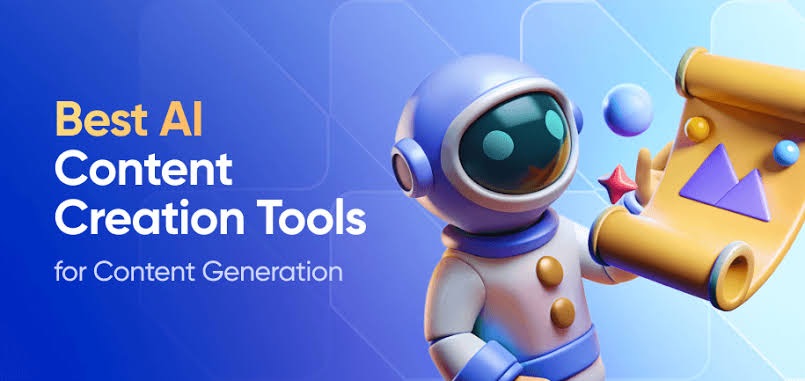
Here’s a brief outline of the best AI tools content creators should be using in 2025:
1. ChatGPT (OpenAI) – For Writing & Brainstorming
Perfect for scripting, blog posts, emails, and social media captions. Offers advanced prompt support and tone customization.
2. Canva Magic Studio – For Visual Content Creation
AI-powered design suggestions, image editing, video creation, and social media templates – ideal for quick, branded visuals.
3. Runway ML – For Video Editing & Generation
Use text prompts to edit videos, remove backgrounds, and even generate new scenes with Gen-3 AI video tools.
4. Midjourney / DALL·E – For Image Generation
Create unique illustrations, thumbnails, or concept art using only text descriptions. Great for YouTube, blogs, or ad creatives.
5. Descript – For Podcasts & Video Editing
Edit videos and audio like a doc. Features include voice cloning, filler word removal, and screen recording.
6. SurferSEO – For SEO Content Optimization
Optimizes blog posts for keyword performance. Real-time suggestions improve ranking chances in Google search.
7. ElevenLabs – For AI Voice Generation
Convert text to speech with human-like voice quality. Ideal for audiobooks, narrations, or multilingual content.
8. Jasper – For Marketing Copy & Automation
AI writing assistant that creates landing pages, emails, ads, and product descriptions with high conversion potential.
9. Notion AI – For Planning & Productivity
Use it to automate content calendars, brainstorm article outlines, or summarize research materials in one place.
Also see this: “How to Use AI for Graphic Design”
